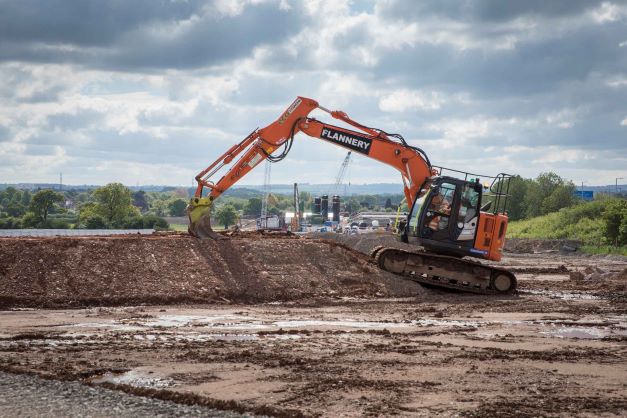Claire Bourgouin and Jonathan Atkinson from CL:AIRE’s Definition of Waste Code of Practice (DoW CoP) team met with Balfour Beatty VINCI (BBV) material management leaders Steve Phipps, Andrew Hall and Sam Boden at its M6 office compound to review their Materials Management Plan and key declarations to optimise reuse of naturally occurring soil, suitable made ground materials, and treated soils and stones.

CL:AIRE was pleased to discuss the use of the DoW CoP for this section of the HS2 works, get an insight into the material tracking system and observe the scale of the works on two local sites. BBV declared nearly 24 Million m3 of material for reuse on Site of Origin (including one Cluster site with external soil treatment facilities), and just under 400,000 m3 of soil under Direct Transfer scenario. This represents the majority of the earthworks with just a few specific declarations for sites requiring remediation.
The Water Orton site links to the Bromford Tunnel on the route into Birmingham with a tunnel entrance westward and two planned viaducts eastward, up to 20 m in height at their highest point. The site demonstrated good management of naturally occurring materials (as shown on the photo).
At the Washwood Heath Cluster site (location of the future HS2 rail depot), we witnessed excavation works of tunnel entrance walls, a diverted culvert, oversize screening and crushing operations, large scale water treatment, bioremediation of total petroleum hydrocarbon-impacted soils and stabilisation works.
The DoW CoP team looks forward to further visits to the HS2 project and other major projects using DoW CoP across the country as we seek to review, enhance and complement how DoW CoP currently operates in line with Defra’s aspirations for soil health and soil resource use, as evidenced in its recently published Environmental Improvement Plan.
